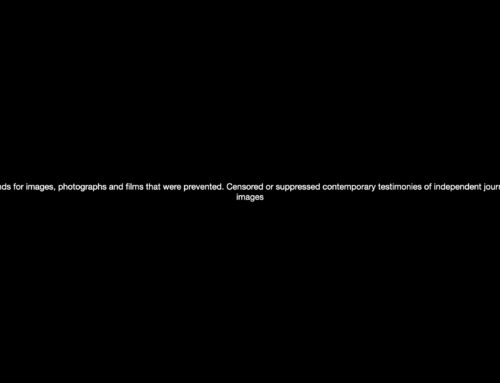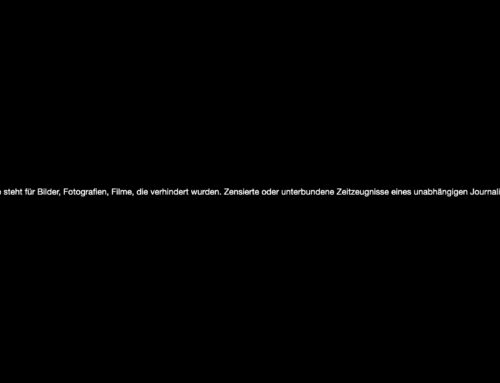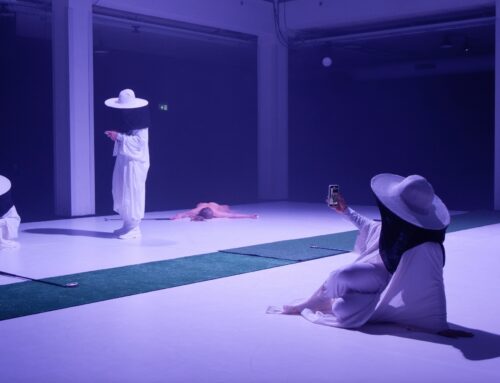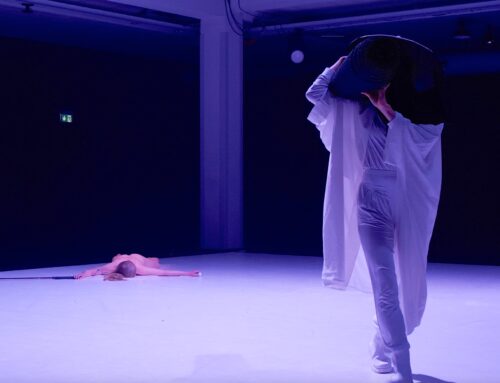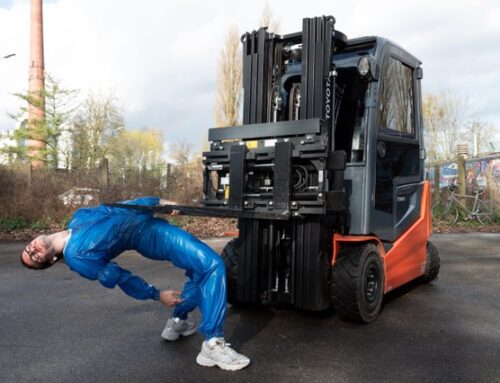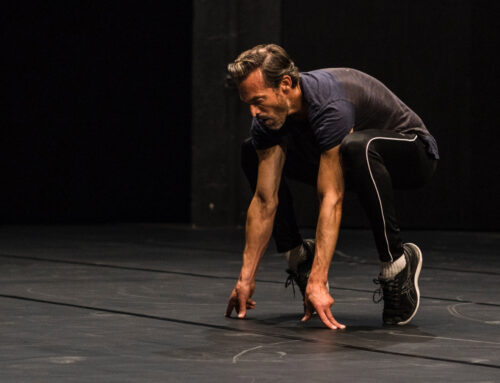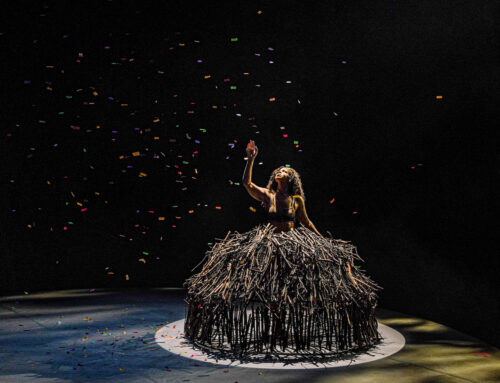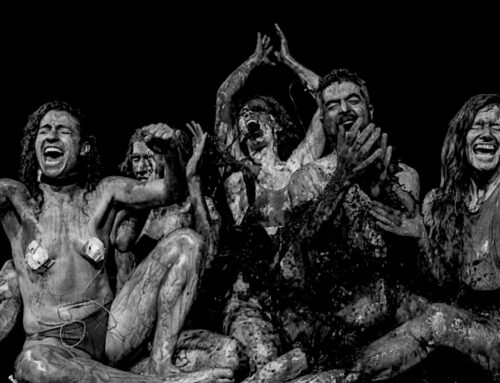What criticism can really do – if it doesn’t nag
Keynote for tanz.media at the aperitif of dance journalists for the opening of the Dance Platform Germany in Munich on March 4, 2020.
by Arnd Wesemann
translated by Karoline Strys
tanz.media is the union of those who are more commonly simply known as dance critics; in other words: we are the villains. At least the French philosopher Jean-Lud Nancy is putting it like that. For you can already hear it in the acoustic sharpness of the word itself, “ccccritick!“
That does not sound good. That is why I would like to set out – as briefly as possible – what is wrong with a profession that serves as the support of culture and arts. Yes, yes, criticism does support the culture and the arts. Who is convinced? Criticism. Yet, the question remains on how it is being done and the reward.
When I first cut my teeth writing for the local paper in Gießen, reviews were everything. Feuilleton, that was: the discussion. I was neither a critic nor a dance journalist. I was a reviewer. I went to a performance and was told to evaluate the seen in a manner of as exciting as possible yet adequate to the journalistic conditions, all in order to be as truthful and – as the saying went – as objective as possible.
Already in former times my reviews had been read via meters that ever since have improved. Reader surveys, as you called them back then, showed that apart from the parties involved in the performance, as well as friends and relatives, almost nobody read dance reviews, not even in the provinces where nothing else going on.
So we had to come up with a trick:We became as wicked as Jean-Luc Nancy describes the critic. We, my colleagues and me, took on to criticize the poor art as effectively as possible… and tread on dance’s toes. Hard to imagine nowadays: A hilarious slating review that is throwing dance up into the air in order to let it drop again roughly so that you, dear readers, slap your knee roaring with laughter while snorting the jam off your breakfast toast? We also created a lot of trouble but at least our reviews were read again. At least for a while. Ever since most of us prefer using the term “dance journalism“ when referring to our work.
Dance journalists, those are the good guys. They shed light on backgrounds, categorize the observed and most do it in such a manner that you would really like to read, see or listen to the art work. All because we are the ones that would like to entertain you. So we can make a living. We dance journalists do not do any harm.
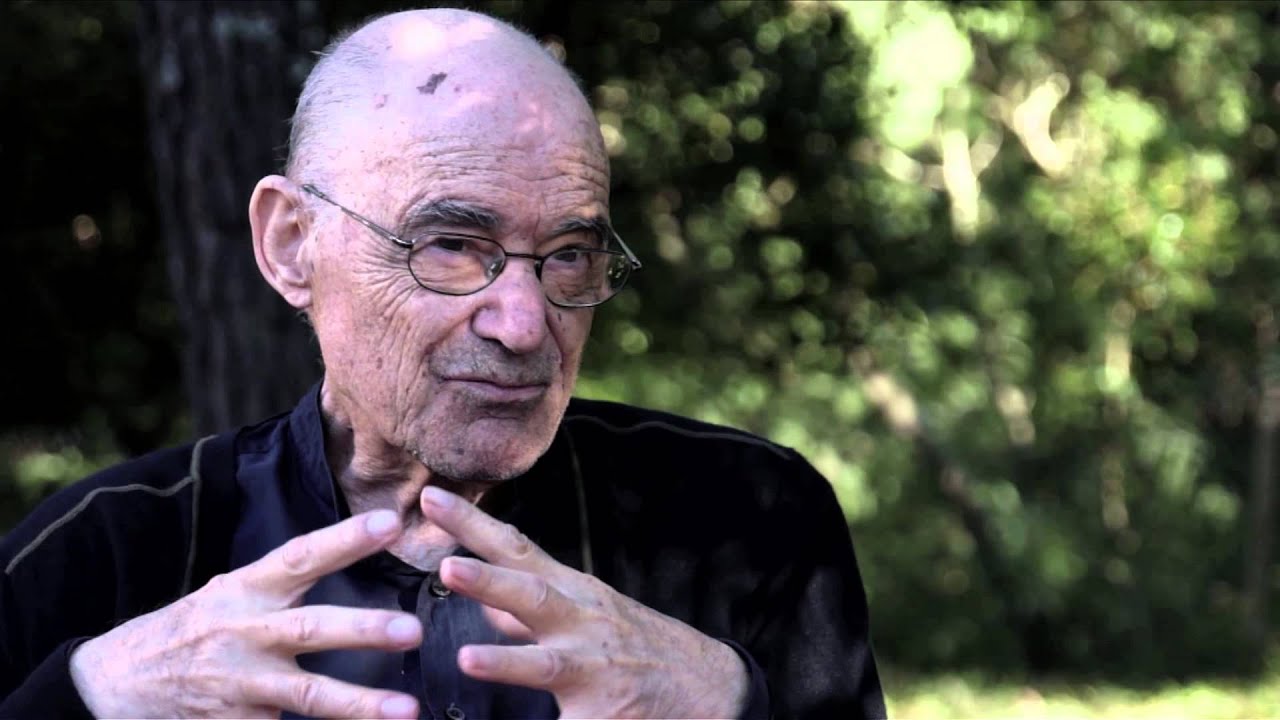
jean-luc-nancy
Is that so?
.
Well. No. The story goes like this: Journalism, and not criticism, is in charge of installing fear.
Journalism is engaged with all these things that human beings have the slightest fear of: viruses, climate change, poverty, war, plane crashes, economic crisis.
Journalism writes about all these things where each and everyone thinks, oh lord, if that happened to me…
Journalism seeds fear in order to make money with those reports about all these crises that we get served every day. Every editorial department buys fear. That means for us:
Better a spectacular divorce at Staatsballett Berlin than an understanding review about the same house.
Rather a report about abuse at the ballet schools of Vienna or Berlin than a review about innovative educational methods in dance. Because our law is the law of journalism. Always provocative with lots of noise and scandals in the restricted area of theater – but there really aren’t enough scandals to make a living of.
Nowadays dance journalists are freelancer without exception no matter the medium: radio, television, newspaper, internet. We ourselves are responsible for how we carry over the news from the world of dance to the editorial department. Offering a dance review from Paris, Den Haag, London, Milan – once the upper enjoyment of European cultural coverage – is these days failing due to travel expenses (despite easyJet) and often enough because of the national conceit of the editorials.
What to do? Critics need partners. These are usually you, dear organizers and also you, dear artists. You provide us with press tickets, you invite us backstage to rehearsals, and sometimes we are treated with flight and hotel. In return – and that is much better paid than any editorial ever could – we write a contribution in the program and take over the task of hosting the audience. As a reward for our work our name will be mentioned on the homepage. For elder generations of dance criticism this is an absolute no-go. The reason: it smells like corruption.

But how to produce a scandal – and yes, we are in need of one, more than you’d like to admit – if we are not well informed about what is happening backstage? If we are not – literally – sitting on the organizers’ laps? We are the freelancing public relations people of the theaters. That is all good and cheap for the theaters. It is only bad, and actually very bad, for criticism.
Oh yes, once they existed: critics with official cars, travel expenses, pension insurance, entrusted with the task to keep the readership of national papers or radios in the loop for three days per week, up to date about important developments in dance art. That meant traveling across the country and reporting and writing about correlations, a failure here and a triumph there. A dream job. And that is why I chose this profession.
Nowadays, we are only helped if we help the artists. That is: When their dance work is compatible with the objectives of journalism.
Journalism gives insight into the concerns of the human being, the worries about oneself.
.
So, if a dance piece deals with the topic of aging and dementia or racism or whatever else we are right to be afraid of… then there will be space for it in the editorials, especially if the word “dance“ won’t be stressed too much what the juries of the free scene and the dramaturges at the state theaters love so much. They do read bad news on their phones everyday as well. We call it: relevance-dance.
In those terms relevant would be what both art and criticism pursue. It is a matter of social criticism, yet not in the sense of Karl Marx as a criticism of the conditions. Rather – as freelancing artist as well as as freelancing critic: Only who is telling the most touching story will be remembered. Successful criticism is telling a touching story. And art: it is the art of touching the audience.
Do you remember the case of the Spiegel reporter Claas Relotius?
This master in storytelling made everything up. Nobody touched more people than this Karl May of today.
It is a matter of being touche, that the readership can imagine something so the brain is brought into motion. It is not a matter of truth but of catching the listener, spectator and reader but foremost: moving them. This is exactly where dance affects what frightens and entertains us.
But being touched: ist that still criticism?
.
Following the ancient physician Hippocrates, criticism signifies a very dramatic moment. Criticism is the moment that reveals whether the patient is going to die or survive.
Still today the saying goes that a patient is in a critical condition.
A patient survives this crisis. Or the patient does not.
Crisis or criticism – both words derive from the Greece Kritai – they simply mean: make it exciting. Or simply: thumbs up, thumbs down.
Will a dance piece survive or will it die?
To be honest, scarcely any reviewer is a doctor.
And no review has ever, as far as I can see, decided about life or death of a dance piece. Nowadays, and more than ever, professional dance curators decide about this subject matter.
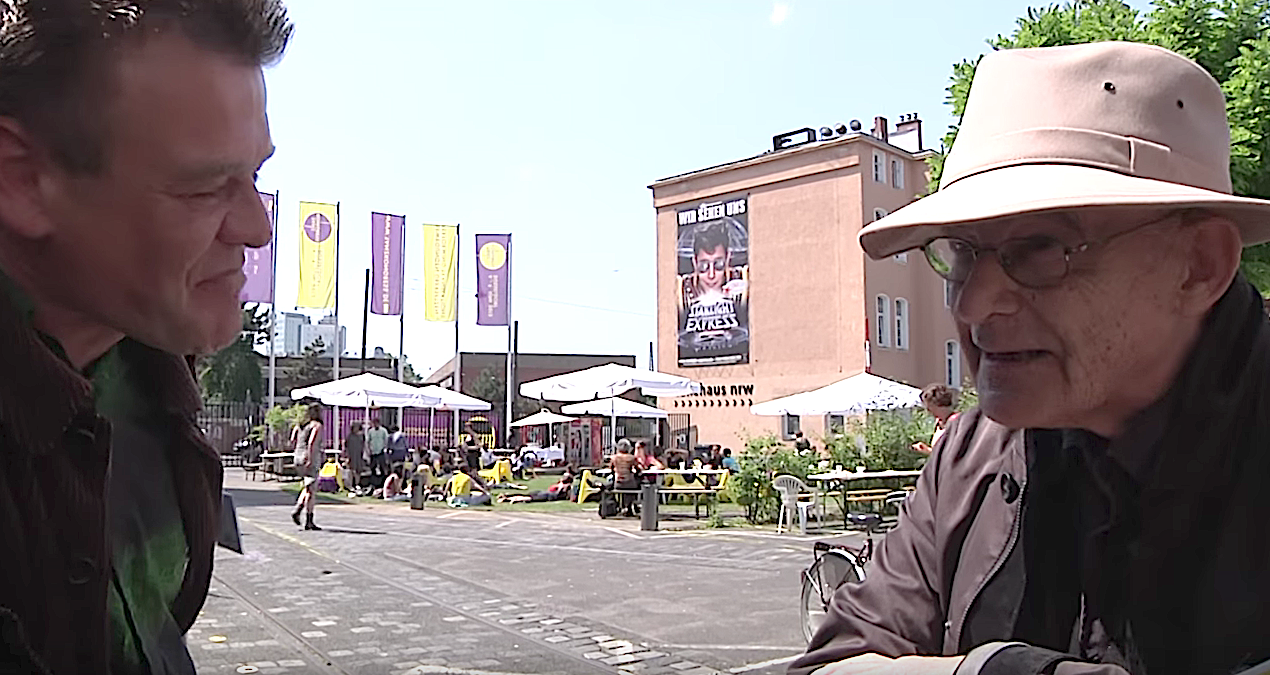
Arnd Wesemann im Gespräch mit Jean-Luc Nancy
And with you, dear dance curators, we are having a tiny problem.
Seriously. Starry-eyed you expect us, the people from the criticism, not to do any harm to your selected and presented dance. You trust us. We will retell your success, even the ambivalent ones, well, somehow. Therefor you prefer older media like daily papers, TV stations or radio. All in all institutions report less and less about dance. Rather of crisis, also in dance.
When critics earn money it is rather with the sexual abuse of young Eleves in dance education.
Or the director dispute at Tanztheater Wuppertal.
Or black facing or regarding the recognition that dance shall prevent illnesses like Parkinson. But, what does all this have to do with art?
There is our problem.
Art, who wants art? You want it. Is it the dance journalism’s problem that you, dear organizers, program a much too elitist dance program? That would imply that you as curators enable real art while we as journalists just aren’t capable of writing clear enough about it. As we have to sell your art like pop, and as very popular to the readers, listeners and spectators and at the same time consider this art, as you do, as great art. How should this be possible?
Once it was possible. In former times. Shall we take a look back at the history of criticism, namely to the 18th century?
Back then a man called Jean Georges Noverre wrote sentences in his letters about the art of dance like:
“The ballets are like all other festivities in general; nothing is more beautiful and fragile but as it says on the paper; nothing is more ungainly and unsavory, as when it is being presented more often“.
That is still correct for today. Yes, journalism must be performed in a more entertaining, amusing, clever and if you wish also more beautiful and fragile manner than the emerging boredom raising from the stage might allow. That is our job: we journalists shall entertain. The art does not have to.

Sol León & Paul Lightfoot – ‚Sad Case‘
Photo by Rahi Rezvani
The feat of Noverre, and also others like Goethe, Lessing or later Charles Baudelaire and Oscar Wilde, is, first of all, getting access to the public opinion via provocative statements and then launching them into a direction to support your own art.
Noverre wanted – as an artist – to push through his Ballet d’action against the former and widespread boring divertissements of the less courtly ballet. He initiated a debate, as we might put it today. There were disputes and the winner, who succeeded at the end, was… well, the professional critic, one, who came from the arts themselves like Oscar Wilde or Charles Baudelaire and formulated proudly the motto of the 19th century:
“An impartial assessment is of no value ever“
or
“The first of all preconditions of a critic is: temperament“.
Nowadays in the 21st century this temperament is referred to as a strong opinion.
You find it rather in the economy or politics section of a paper and more seldomly in the feuilleton.
You find it in popular philosophers in talkshows, scarcely in cultural reports.
The opinionated criticism which comes along with anger, even more humor and some populist arguments, derives from the 19th century, just like the critic himself.
This profession, interestingly, developed out of the at that time widely spread profession of the theater censors deployed by the police.
Censors. those were the people deciding in the name of the governmental power if the theater is offending the rulers.
Later in the soviet union and the GDR they were controlling that the theaters would meet the defined ideological requirements.
The censors gave grades on performance and misconduct.
Whereas the temperamental critic in the 20th century finally wanted to be free from this Biedermeier task of politically correct judgement of dances. He wanted to be obliged to only his own bias and temperament.
That is why you called some of these critics popes as they were unmistakably representatives of the segregation of faith, for or against the modern age, for or against the classical ballet. They took charge in the debate about art as did the artists beforehand. And thus brought art to the public.
Did that stop?
For the majority of people dance is just one miniature biotope among thousands. Dance is a small territory where everyone knows everyone. An island that by itself cannot generate any force. That is why dance must be funded, supported, cultivated.
Dance without funding is weak. Namely because dance exists in a publicly funded and exclusive protection area.
You can steady this weakness by means of political funds and tax money which makes it appear as strength. Strictly speaking it is the strong state protecting dance. And ever since the state has been protecting dance, in Germany since the takeover by the Nazis, journalism ought to protect dance as well. So they say.
When journalism is protecting dance then journalists belongs to the interest representatives of dance. However, journalism will behave as moderate as you can read in a lot of reviews. There is still dominating a form deriving from the theater censors of the 19th century. At least where dance criticism is surviving as a side job, one does admire dance, the journalist criticizes also a bit and copies deliberately from the printed program.
So it is back, the Biedermeier, politically correct judgement of dance. Only for its best of course.
But: Nobody wants to read this. At least not if the review is following the academic standard that art is supposed to be, as the saying goes, “discursively embedded“ with respect to its heir and the cultural identity and origin – lots of words that sounded quite similar in the 19th century: back then tradition meant the people and folklore.
What is the difference today when dance is being presented now in the diaspora, only as a dance on the run, the dance from Africa or Hongkong always as the dance of the victims?
The once exotic dance used to find its amazed audience – all racists – by itself, today it has to be pictured as post-colonial revenge so it would interest anybody at all in the editorial.
So it is not a matter of art, it is a matter of discourse.
This seems to be the situation of dance criticism right now: we do not criticize anymore. We judge by: moderating – politically correct.
We describe the emotional well-being of artists, their ethical questions, those of queerness for example.
Naturally we can hence write about the poverty of the artist or, to report something positive, about the excellent medical importance of dance.
We invite dancers to dance as models in front of the camera – as recently Anne Teresa de Keersmaker allowed a multicultural photo shooting for the premiere of “West Side Story“ in New York. Instead of criticism.
And yes, we also do like writing portraits about each and everyone as long as they are peaking out a bit from the tight dance biotope.
Well and art, who cares about art?
In dance, art is a thing in motion. It is impossible to describe a movement by the means and facts of journalism. Instead of the dreads of war, journalism is writing that 578 deaths occurred this night. For dance that would mean reducing the art to mere facts and the immobile.
Even when we write a dancer is walking, running, tumbling, flying, these verbs do not describe the actual movement. Our task is rather to make move with the description of movement itself. And that works: only via criticism.
At least where this kind of criticism is still alive it will no longer be a criticism of art but more often and more and more popular a criticism of cultural politics. And justifiably so.
Effectively the criticism of today is criticizing mostly failed cultural politics. Criticism does not want to protect dance but the preconditions of this art form so that you, dear curators, can further decide freely on the art.
We journalists became those who do not have to be entertained anymore nor to praise or blame.
We are supposed to enable – with journalistic thoroughness and distance – your protection of possible political impositions. As you are dependent on politics.
.
We are also dependent. On you.

©PRESSEBILDER-TANZWEB-Phoenix-Dance-Theatre

